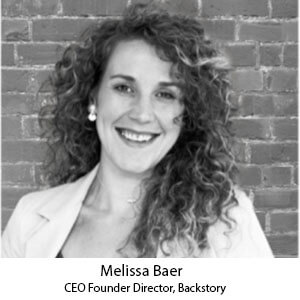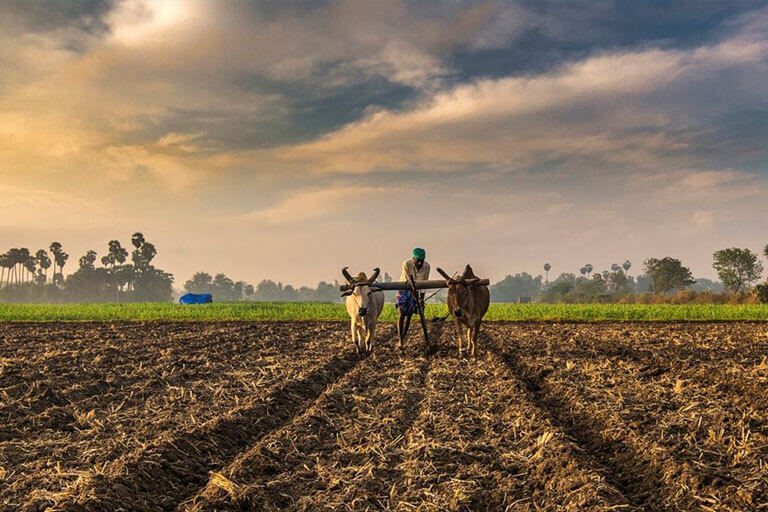Agriculture – What’s Next?
 I’ve spent my life being directly involved in agriculture. Either on my family farm, running my own operation or starting businesses in distribution, education and tourism around agriculture and food products. I was indoctrinated into the principles of sustainability from as early as I could walk and talk. Not a word of a lie, my mother and father used to regularly gather with a group of equally forward-thinking farmers (they were just called weirdos at the time) and discuss soil fertility, composting, animal health and human health. My godfather was a pioneer in the animal supplement and natural soil amendment space. He created many animal supplement mixtures and grew an international business to help farmers to farm naturally for healthy food and a healthy planet. To give you an even greater idea of how truly indoctrinated I was, my godfather (best friend of my father) also happened to be one of the earliest practicing naturopaths in Ontario. He dedicated his life to the study and understanding of how the biosphere interacts with human health.
I’ve spent my life being directly involved in agriculture. Either on my family farm, running my own operation or starting businesses in distribution, education and tourism around agriculture and food products. I was indoctrinated into the principles of sustainability from as early as I could walk and talk. Not a word of a lie, my mother and father used to regularly gather with a group of equally forward-thinking farmers (they were just called weirdos at the time) and discuss soil fertility, composting, animal health and human health. My godfather was a pioneer in the animal supplement and natural soil amendment space. He created many animal supplement mixtures and grew an international business to help farmers to farm naturally for healthy food and a healthy planet. To give you an even greater idea of how truly indoctrinated I was, my godfather (best friend of my father) also happened to be one of the earliest practicing naturopaths in Ontario. He dedicated his life to the study and understanding of how the biosphere interacts with human health.
I now spend my days working in software development with Webtools Limited, focusing to support innovation in agriculture. With a more than 30-year view broadly across continents, sectors of the supply chain and various types of agriculture production, I thought I’d share a few perspectives on what we’re now seeing in the Agri-tech industry and where the exciting opportunities exist for the bold and the ambitious.
What’s Driving All This Attention on Agri-Tech?
The world over, the discussion about our food supply, human health, agriculture, and the environment are coming to the fore. It is deeply encouraging that now 30 years later there is, dare I say, a widespread acceptance that in order for humans to be healthy (in all ways) we need to actually take care of how we grow our food, and that starts with soil.
This image from https://www.stockholmresilience.org/ the Centre for Sustainability Science for Biosphere Stewardship reorganises the UN Sustainability Development Goals, articulating the impact the Biosphere has on the rest of the goals.
Investment focus shifting from Altering Agriculture to Supporting and Regenerative
Globally in 2019 we saw an unprecedented jump in investment in agriculture companies from 48% year on year from 2018.
I’ve been watching this innovation space for a while (hazard of growing up on an early adopter organic farm in the 80’s), and what’s even more interesting is that the type of investment is starting to shift. We had the hay day of the biotech investment, and while that’s not going away, the investment into technology that supports, measures and understands instead of alters is growing. With the biotech industry coming under fire with increasingly large lawsuits and hail-mary mergers, the regenerative agriculture investment space is growing momentum.
Why do we need to watch this? It may pale in comparison to the biotech industry right now, but remember when nobody paid any attention to a little movie rental company that sent DVD’s in the mail? I’ve been seeing the organic and regenerative agriculture discussion from the beginning; it’s been trickling along barely hanging on.
Why I think it’s beginning its uptick is due to the frequency and visibility of investment into these types of technology. The fact that “Dirt to Soil” author Gabe Brown (regenerative farming expert) is speaking at Agri-tech seminars and in June 2019 US regenerative agriculture investments were calculated at $45B speaks volumes for what is emerging. Add to that the likes of Danone, Yara, Corteva, General Mills and Anheuser Busch making comments about regenerative agriculture and sustainable agriculture, making this a topic of debate on the US Democratic nomination national debate stage for the first time in history.
They may be doing it for the clickbait right now, but this doesn’t have the markings of a fad. I’ve seen shelf space for organic products steadily double year over year. That pesky old Moore’s law back at it again. Yes, 2 units doubled is only 4, but if we aren’t paying attention to how technology can support regenerative agriculture, we’re probably going to miss the boat.
What this Means for Agri-Tech and Innovation in Agriculture
Sustainable agriculture has traditionally not looked economically viable. Increasingly, business models and technology are shifting to make it so it is. The key to sustainability is diversity, which is the very thing that’s previously made it difficult to be economically viable. Many small things are (traditionally) hard to produce, distribute, track, organise and market. Technology is changing that rapidly.
We are at a major crossroads in history where decentralised technology, the ability to track, gain insights, understand and make “small and collaborative” production methods economically viable exists.
We’ve Heard it Before – Data is the Name of the Game…
Data in agriculture is becoming increasingly available, in many cases the technology is there but we still experience challenges in adoption. Recently Harry Hawke and Brett O’Donnell (of Webtools Health and Webtools respectively) attended Singularity University in San Francisco. One major take away was that 90% of the world’s data has been created in the last two years. Many of the systems we use today in agriculture were built more than two years ago. We have to face the fact that many of these systems are just not built to handle the quantity of data that is being captured or will be captured even as close as 2020.
Beyond legacy system challenges, there are a few unique barriers specific to agriculture that the sector needs to address in order to truly accomplish sustainability in production and the rest of the supply chain.
I’ll go into depth on the 5 Key Barriers I’ve seen through my time on the farm, advising farms, starting my own agriculture/supply chain businesses, working with Agri-tech startups and now sitting on the technology development side of the equation;
1) Accuracy of data sources – the next breakdown
2) Usability and interoperability
3) Social barriers to adoption
4) Connectivity
5) Discerning consumers
Accuracy (Sensor Technology/Data Standards)
With data coming out of our ears we’re now questioning which data is good, better and best. It’s very exciting what is happening in the IoT world and what’s possible to measure in real time (or at least pretty close to real time). ENTO (an IOT device company and part of the Webtools family) is already monitoring and reporting on events across New Zealand. Currently there are about 250 devices deployed to monitor a variety of events relating to traffic, property, and agriculture. So we understand the immense power of real time insights. That being said, we’ve also just finished a piece of work where we began to understand the rigour of testing technology in laboratories, the cost of getting precise data, and the extensive calibration of devices required to produce data to the highest international standard.
Sensor technology is improving, but it is still a relatively “wild west” when it comes to validating sources of data from sensors plugged into IOT devices.
A lot of data is still manually collected in the agriculture world as well, so how will we qualify quality of the source of data we’re looking at?
It may become a hierarchy of data sources that essentially says “based on sources of data, this information has an accuracy rating of X%”.
Another area of question is the accuracy and agility of environmental modelling in software vs collecting real, in situation data and being able to understand it, dissect it and report on it in a timely manner. This is especially important when models are used in government regulation. These models are usually developed over years and years of academic research, which is important, but will never include all possible scenarios. If regulation and enforcement is to happen the measuring stick must be agreed upon. The reality is that the science is still happening on this, we don’t fully understand regenerative agriculture and its ability to positively impact climate. Agriculture doesn’t happen in a lab or in a controlled study, it happens in the world, and farms are tiny ecosystems which have complexities that are not fully understood yet.
What’s to Learn: Capture, capture, capture. The opportunity for companies now is to prove that they have quality data. Start now. You’ll get better at making sense of it as technology improves. You won’t have time to get into the game after the technology is fully developed, because you won’t have the data sets.
Usability of Interfaces and Interoperability /Legacy Systems
This is a big one. Agriculture and primary producers are a relatively secluded bunch, with very different lifestyles to the urban ones we’ve become accustomed to. We’ve all experienced a bad user experience in our time and the frustration with having to use multiple moderately usable apps to accomplish one thing. One app for accounting, another for banking, another for invoicing. Its only when this became integrated did it really become properly usable as XERO adopted a collaborative ecosystem business model. This has yet to properly occur in the agriculture space. Add to that the fact that agriculture is a beast to tackle; where to start is not immediately evident. What ends up happening is that solution providers try to boil the ocean and end up frustrating most, confusing some, and even galvanising users against the tech.
If you have to enter the same data across multiple apps or forms when you’re already working a 16-hour day it’s definitely not a sustainable solution, nor does it suggest that any accurate data will come out of that. When you feel forced into doing it because of increasing compliance, regulation, impending taxation or just for the privilege of the social license now required just to operate as you’ve been doing for decades, it’s truly a recipe for disaster and further separation of urban and rural.
Agriculture, as with many other industries, holds data in some very old legacy systems. The cost to replace these systems has traditionally been quite high, however with more and more tools coming available we’ve been able to replace quite a few legacy systems across Energy and Health. These legacy systems definitely hold back the capture, use and understanding of the increasing amounts of data. If a farmer still has to submit a paper-based report on their environmental plan to their council and their council has a very different reporting requirement than the others, this makes it challenging to create technology that could reduce this reporting burden on the primary sector.
What’s to Learn: User experience must be top notch, and interoperability must be a focus for the agriculture sector. We’ve experienced it with Webtools Health with the FHIR standards (Fast Healthcare Interoperability Resources) allowing for easy creation of API’s and interoperability between systems. Legacy systems need to be evaluated and senior leadership needs to know when the time horizon is to replace and begin that process now.
Social Barriers
Privacy is very important to farmers. Primary producers are increasingly coming under fire, sometimes deservedly so, and many times from ill-informed consumers with only half the story. It’s no wonder privacy of data is a big question on the minds of producers. We’re asking producers, who learned from their forefathers over decades and from institutions often more than 2 decades ago, to now change and adopt new ways of doing things. RIGHT NOW. We don’t really care that their entire livelihood is dependent upon doing it the way they’ve always done it.
We all know how hard it is to make the choice to change jobs, move cities, or buy a new house. Those decisions are hard, take time and planning and often education. We’re asking farmers to change the very thing that’s earned them and their ancestors a reasonable living. They often have not been educated in regenerative sustainable methods – so it’s the equivalent of someone asking you to change your job from something you’ve done for 30 years, go learn an entirely new set of skills, and while you’re doing that – someone (public) reserves the right to freely criticise in your learning process. Privacy is an issue, and with a bit of empathy you can see why.
What’s to Learn: Everything we do must keep this at the forefront. Permissioned data and elective participation in data sharing needs to remain at the centre of development. The incentives to participate need to be clearly thought out and enticing. Big sticks will only go so far (as demonstrated in the abysmal uptake of NAIT in NZ for tracking animals and reducing the outbreak of disease).
Connectivity
This is getting better every day; infrastructure is improving and the networks for IoT devices are allowing data to be sent sometimes even in very remote areas. This will become even less of a barrier as ubiquitous connectivity occurs. It’s easy to be lulled into a western connectivity mindset as 56% of the globe now uses the internet and 4.33 billion people are active users as of 2019. There are still countries and regions that have limited or blocked internet usage.
While this barrier is increasingly less and less an issue, it still would be remiss to not mention it. It will continue to impact the technology we can develop and use on farms and in primary industries.
What’s to learn: We’re still not “there”. Connectivity for agriculture and democratisation of access to internet continues be important. Technology needs to be mindful of this when being developed.
Maturing/Discerning Consumers
If you ask many producers or manufacturers of agriculture and food products, they’ll say that the business case just purely doesn’t exist for tracking and tracing everything to the nth degree, that consumers are actually not that discerning and will buy what they’re comfortable with, what is familiar and what they can afford, even if they say they want all the bells and whistles. The land of opportunity exists with the companies that can capture data and make it make sense to an increasingly data-overloaded consumer. Consumers are never going to care about the amount of Nitrate in soil or the irrigation rate if you don’t make it relevant to them. The company that can quickly and easily articulate that practices like “over seeding” and “composting” have an impact on the quality of food produced and ultimately the health of the environment and health of the person consuming it will be the winners. Consumers are increasingly getting access to their health in real time, personalized, and in the palm of their hand. You only have to look so far as MyViome, and 23 and Me to see the powerful technology that’s now become available to consumers to take their health into their own hands.
Agriculture can no longer rest on the familiar supply chain, with the consumer many steps away from production. This consumer needs to be intimately involved in the decisions about products, crops and data capture from the beginning. We need to be better at capturing, presenting and utilising data in order to produce, manufacture and sell diversified product offerings.
It’s widely acknowledged that New Zealand needs to be better at “telling their story”. This story must be more than pretty pictures and well edited video. It needs to prove and show evidence for so much more, not just for consumers but for compliance and regulation as well. The early adopters will adopt just in time to avoid penalty from regulation and compliance, and the ambitious will understand the opportunity is now to become the leader in data and address the challenges outlined in this article. When the time is “right” it will be too late.














